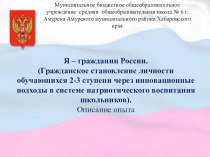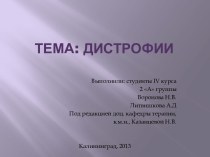- Главная
- Разное
- Бизнес и предпринимательство
- Образование
- Развлечения
- Государство
- Спорт
- Графика
- Культурология
- Еда и кулинария
- Лингвистика
- Религиоведение
- Черчение
- Физкультура
- ИЗО
- Психология
- Социология
- Английский язык
- Астрономия
- Алгебра
- Биология
- География
- Геометрия
- Детские презентации
- Информатика
- История
- Литература
- Маркетинг
- Математика
- Медицина
- Менеджмент
- Музыка
- МХК
- Немецкий язык
- ОБЖ
- Обществознание
- Окружающий мир
- Педагогика
- Русский язык
- Технология
- Физика
- Философия
- Химия
- Шаблоны, картинки для презентаций
- Экология
- Экономика
- Юриспруденция
Что такое findslide.org?
FindSlide.org - это сайт презентаций, докладов, шаблонов в формате PowerPoint.
Обратная связь
Email: Нажмите что бы посмотреть
Презентация на тему Probability-2
Содержание
- 2. Recap Why should we learn Probability?Formulating questions
- 3. Today’s ObjectivesCounting subsets of a setConditional ProbabilityIndependenceTotal Probability TheoremBaye’s theoremRandom variables
- 4.
- 5. Why Count Subsets of Set?Example: Suppose we
- 6.
- 7.
- 8.
- 9.
- 10.
- 11.
- 12.
- 13.
- 14. Conditional Probability An Interesting Kind of Probability
- 15. Biryani ☺
- 16. Conditional Probability Of course, the vast majority
- 17. Conditional Probability What is the probability that
- 18. Conditional Probability So, how to answer the “Food Court” question?
- 19.
- 20. Why Do Tree Diagrams Work?We have solved
- 21. Why Do Tree Diagrams Work?Let’s look the
- 22. Why Do Tree Diagrams Work?
- 23. Why Do Tree Diagrams Work?
- 24. Why Do Tree Diagrams Work?“So the Product
- 25.
- 26.
- 27.
- 28.
- 29.
- 30.
- 31. What Independence Really Means?Are these events independent?AB
- 32. What Independence Really Means?Thus being dependent is completely different from being disjoint!
- 33. What Independence Really Means?Thus being dependent is
- 34. What Independence Really Means?Thus being dependent is
- 35. Independence---Cont. Generally, independence is an assumption that
- 36. Total Probability TheoremTake a look at the figure belowA1A2A3B
- 37. Total Probability TheoremTake a look at the figure belowA1A2A3B
- 38. Total Probability TheoremTake a look at the figure belowA1A2A3B
- 39. Total Probability TheoremTake a look at the figure belowA1A2A3B
- 40. Total Probability TheoremTake a look at the figure belowA1A2A3B
- 41. Total Probability TheoremWhere do we use it?Baye’s Theorem!
- 42. Medical Testing ProblemLet’s assume a “not-so-perfect” test
- 43. Probability Tree A: The test came positiveB:
- 44.
- 45. Conditional Probability Tree---Cont.Surprising, Right! So if the
- 46.
- 47.
- 48. Bayes Theorem---Cont.A Posteriori Probabilities For example:
- 49.
- 50.
- 51.
- 52.
- 53.
- 54. Random Variables So far, we focused on
- 55. Random Variables But most often, we are
- 56. Random Variables---Cont.“Random Variables” are nothing but “functions”A
- 57. Random Variables---Cont.“Random Variables” are nothing but “functions”A
- 58.
- 59.
- 60.
- 61.
- 62.
- 63. Expected ValueWeighted average of the values of
- 64.
- 65.
- 66. Variance Consider the following two gambling games:Game
- 67. Variance Let’s compute the expected return for both games:
- 68.
- 69.
- 70.
- 71. Variance Game A: You win $2 with probability 2/3 and lose $1 with probability 1/3.
- 72. Variance For game BIntuitively, this means that
- 73. Standard Deviation Because of its definition in
- 74. Standard Deviation For example, in Game B
- 75. Скачать презентацию
- 76. Похожие презентации
Recap Why should we learn Probability?Formulating questions in terms of probabilityBuilding the probability modelFour-step MethodUniform sample spacesCounting
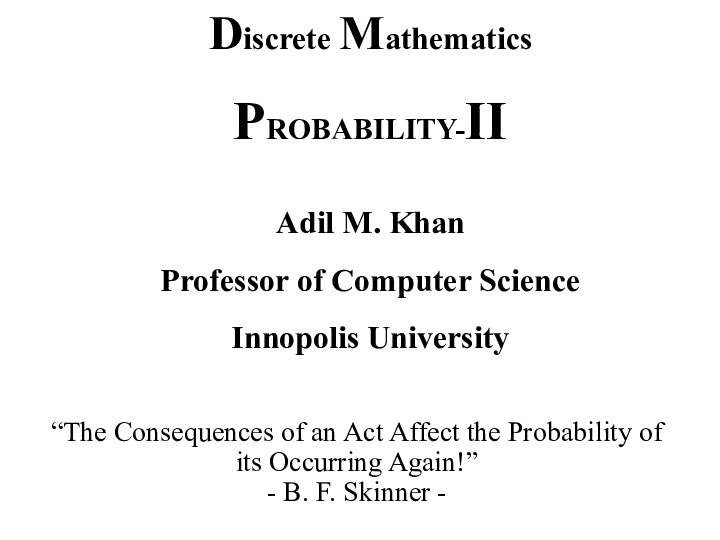
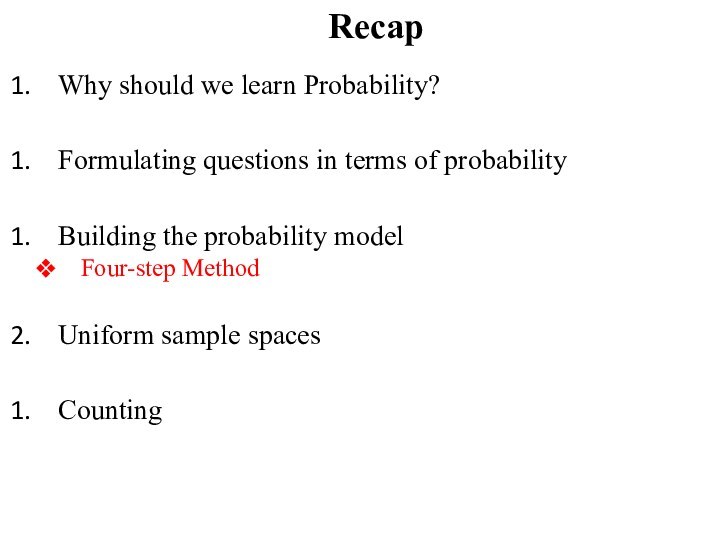

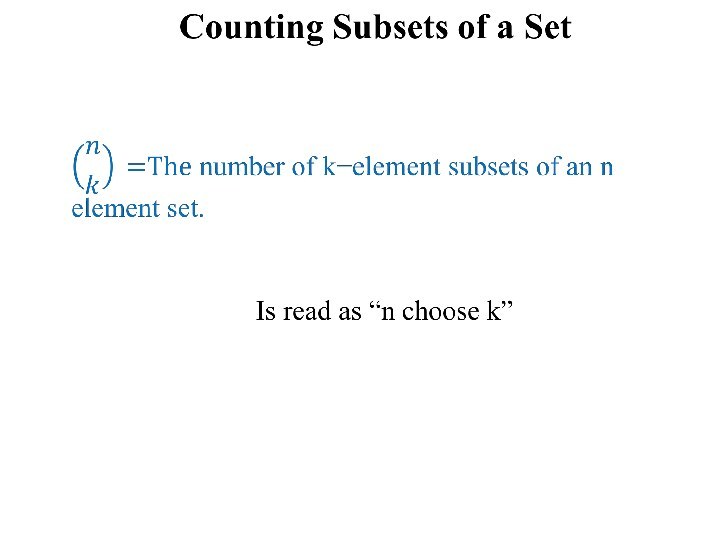
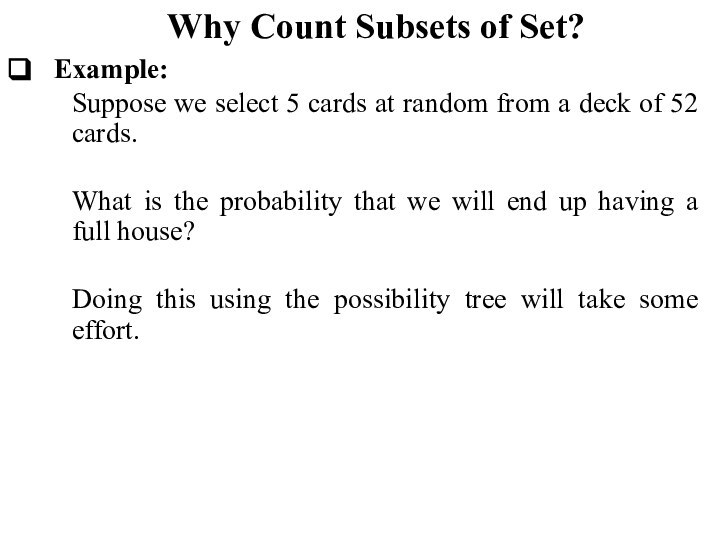
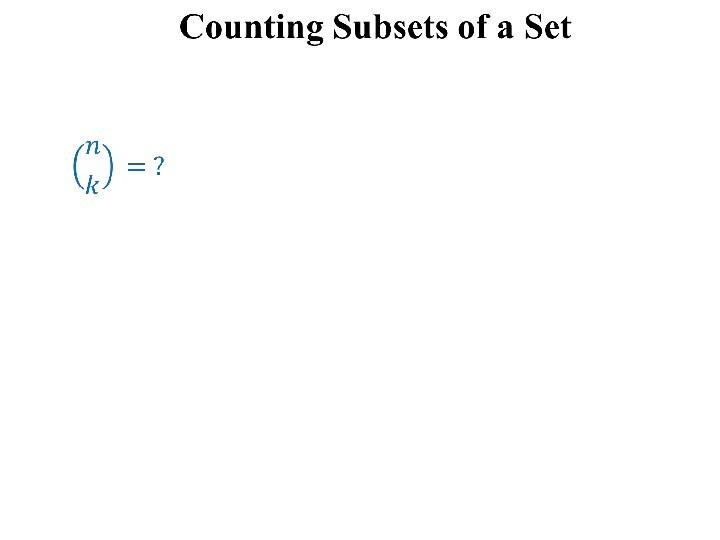


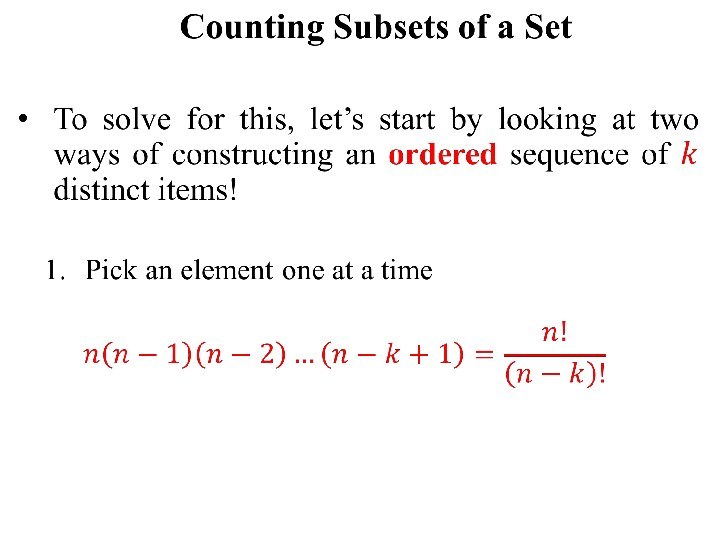

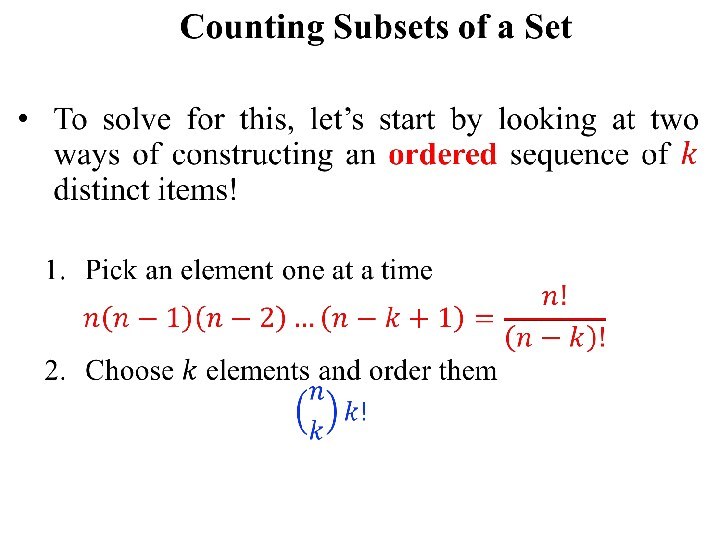
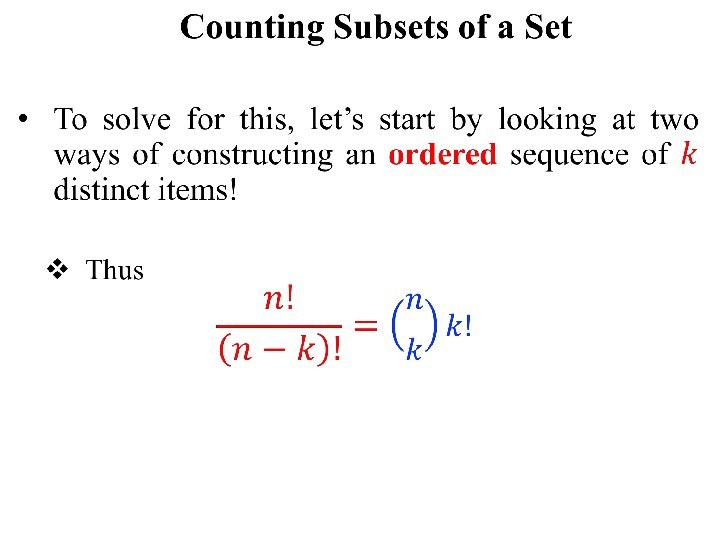



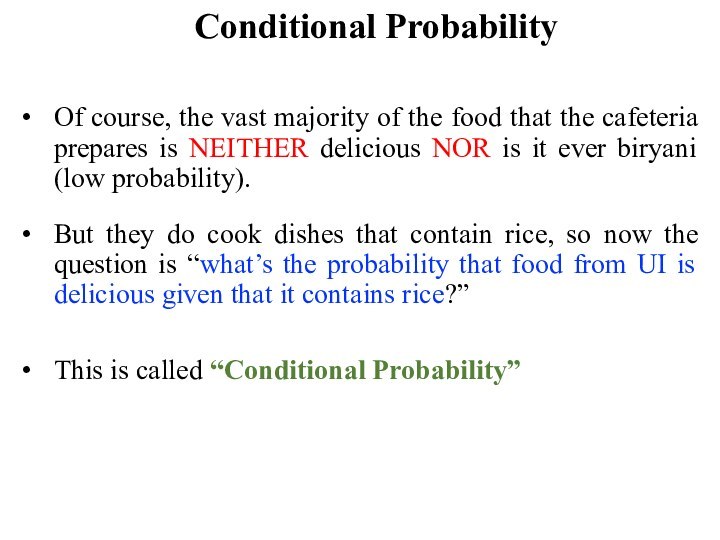
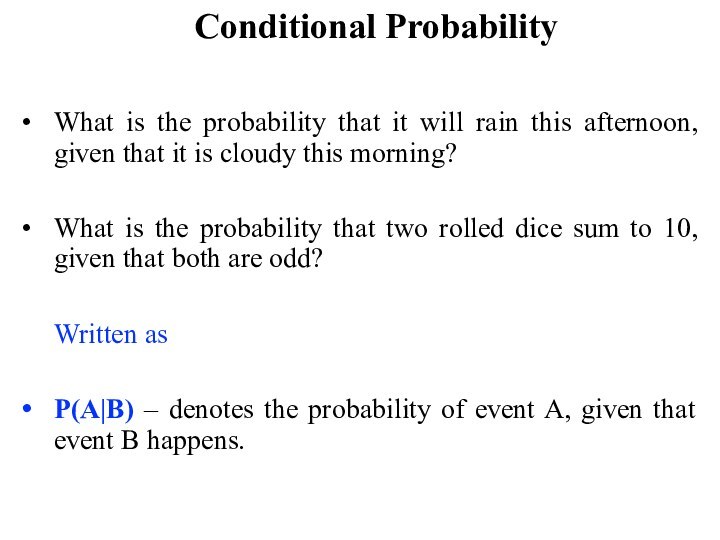

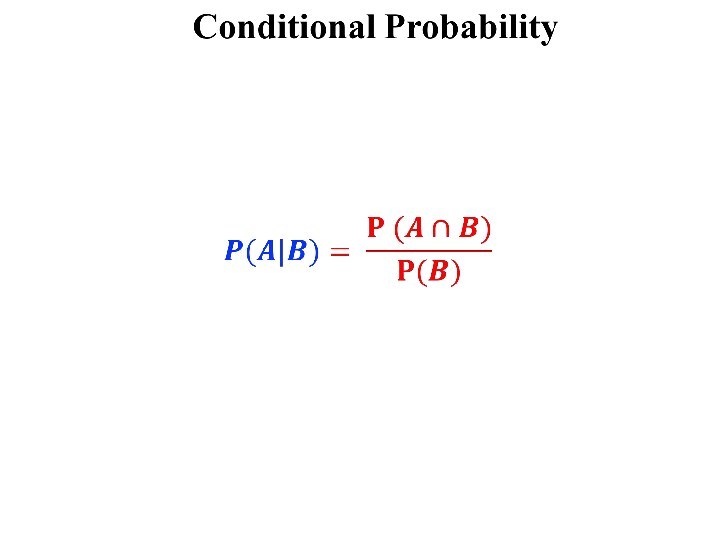
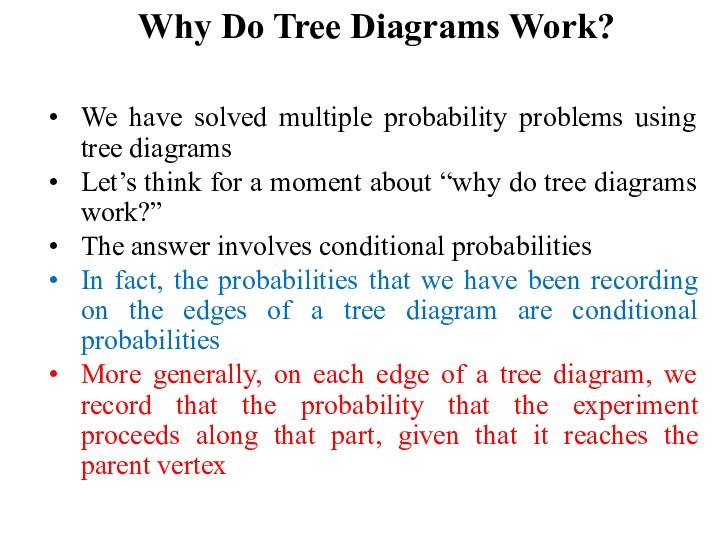


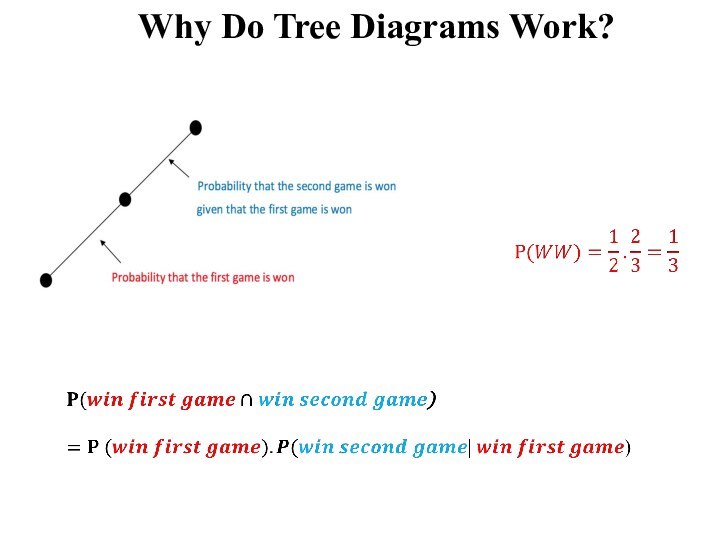
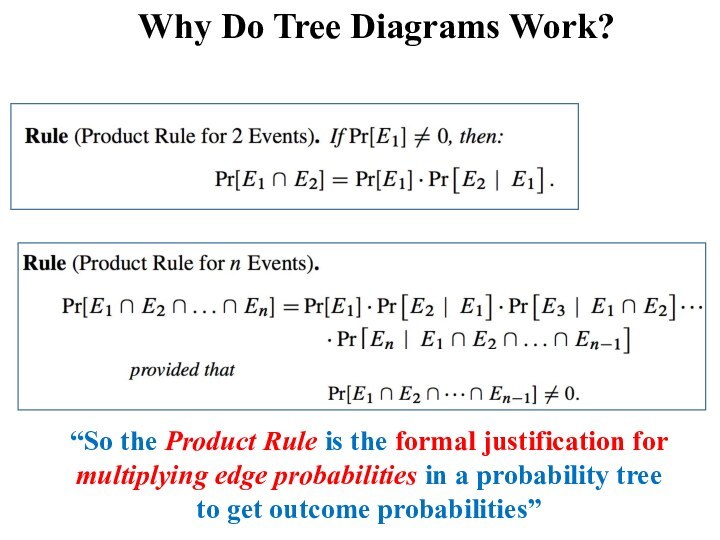
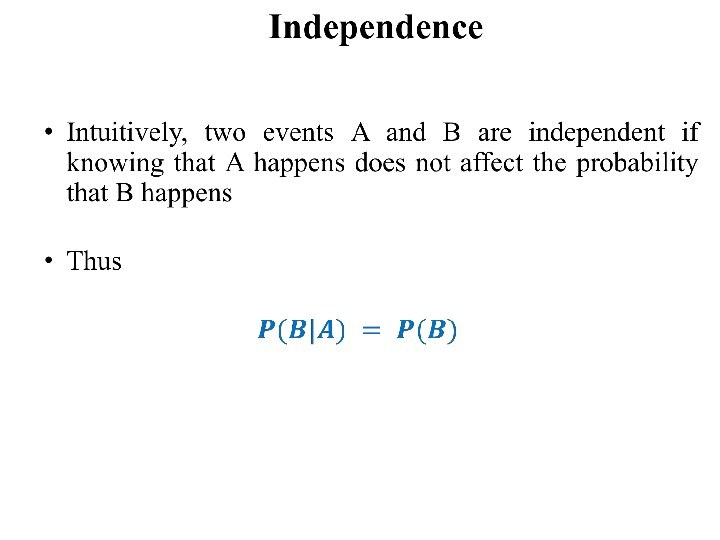
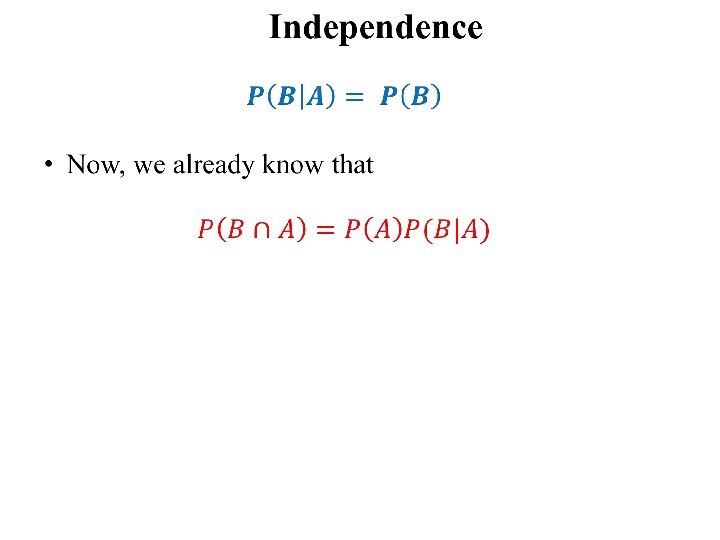
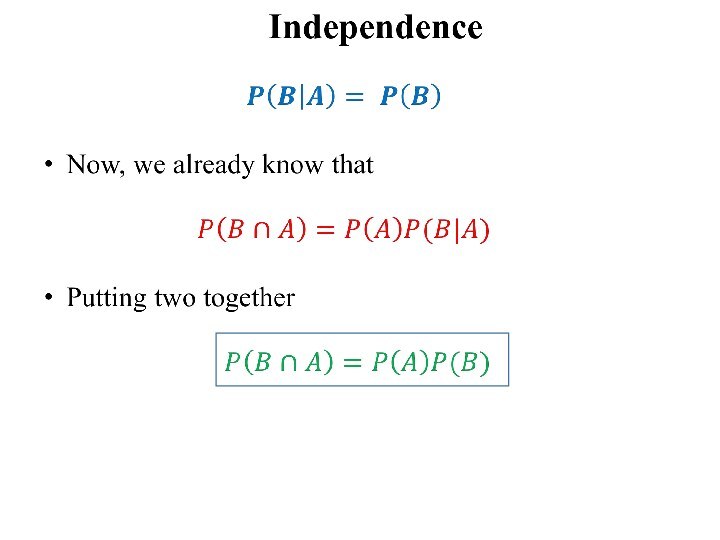

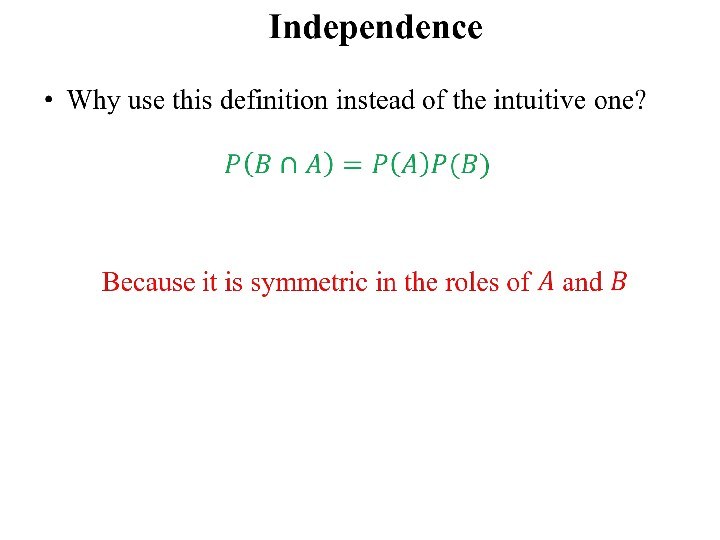
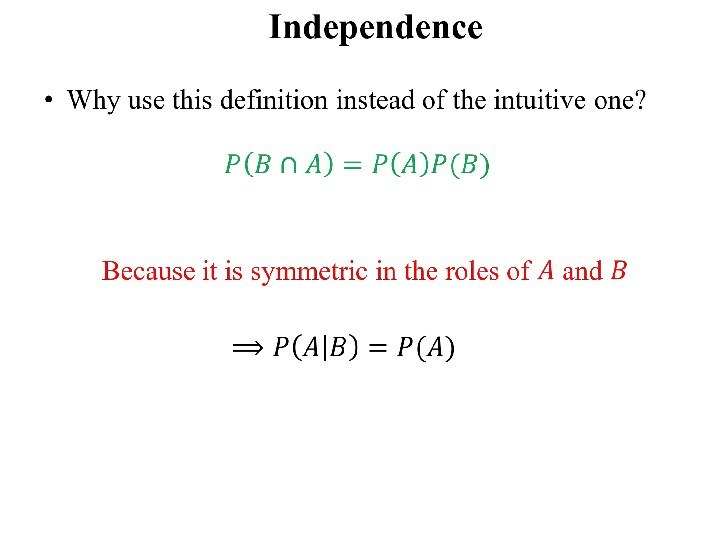

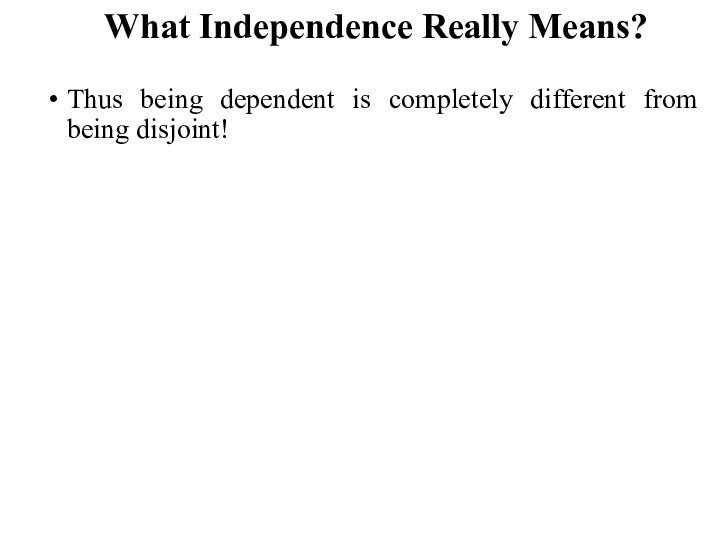


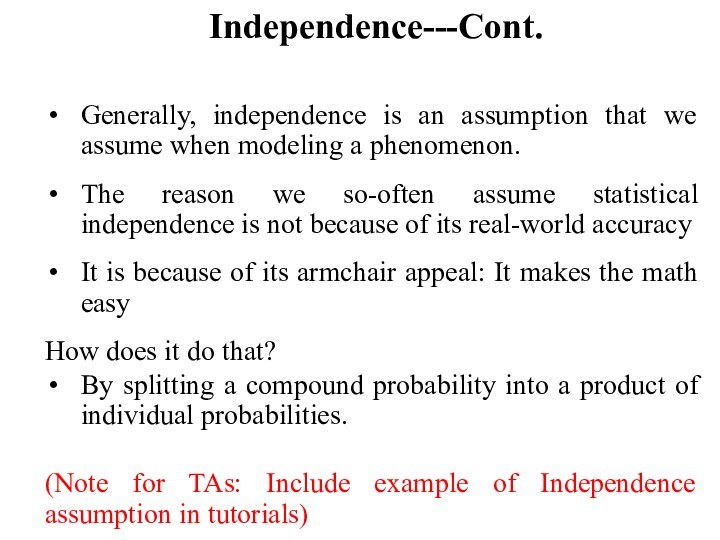


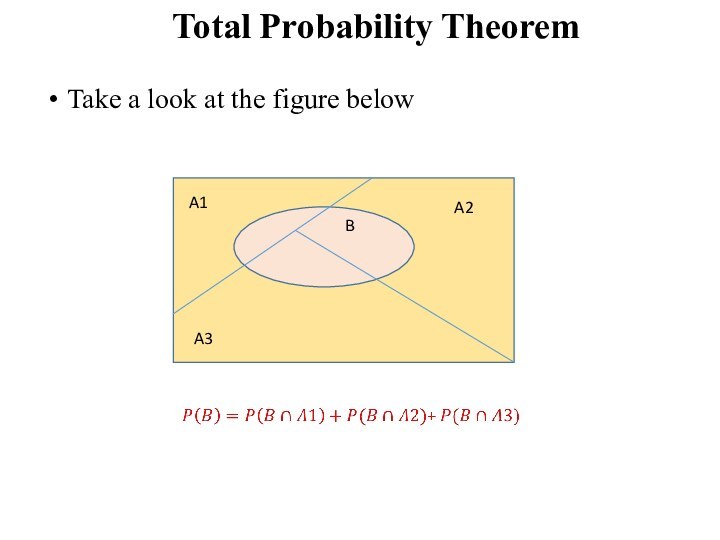
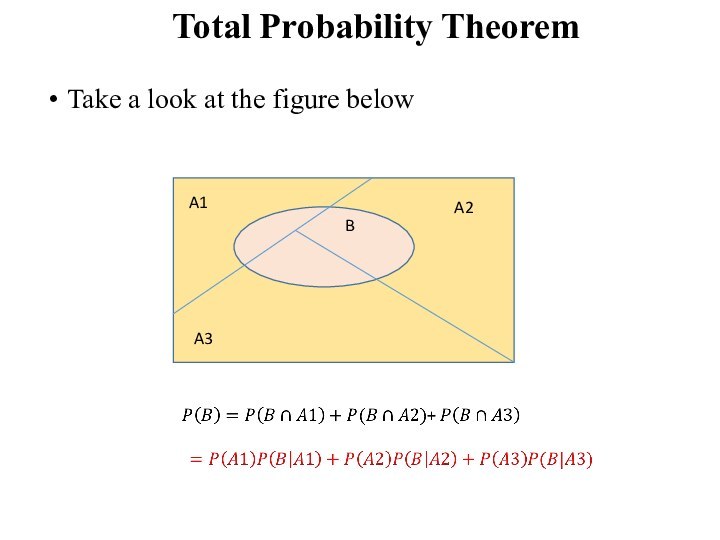
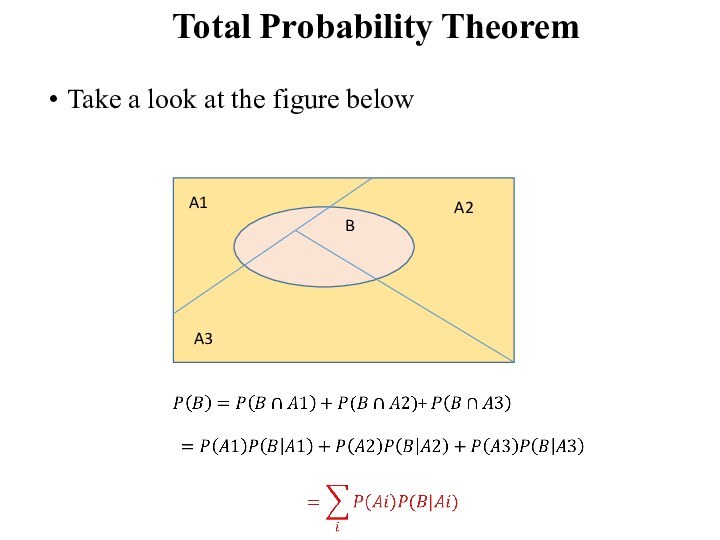

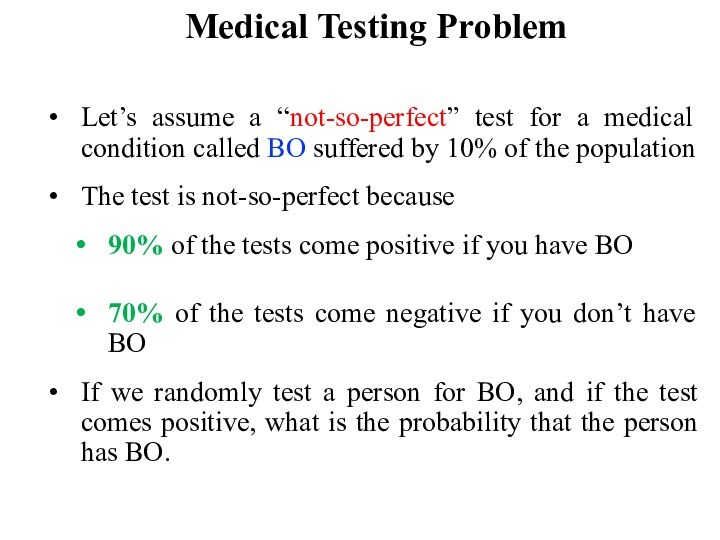
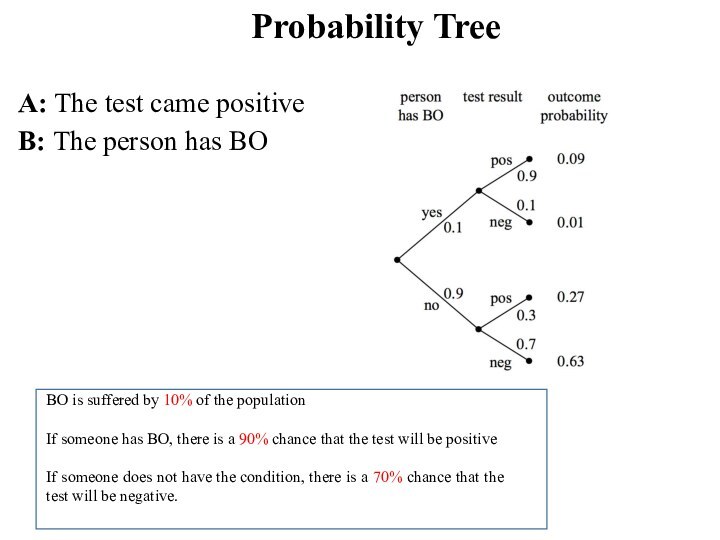
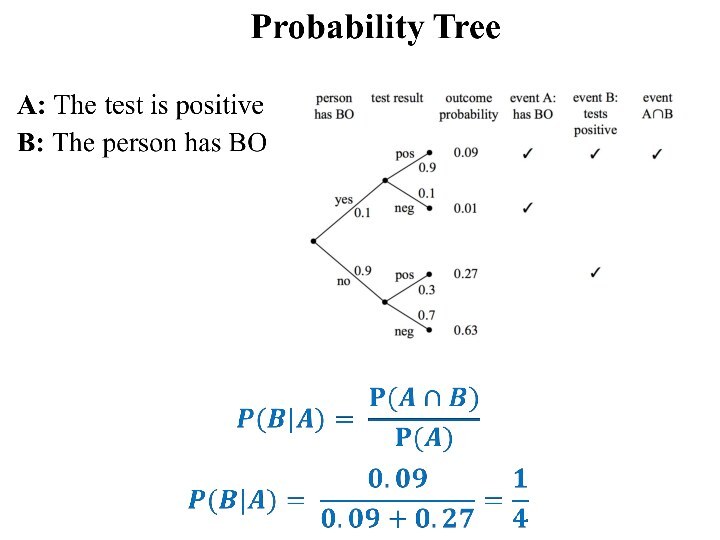

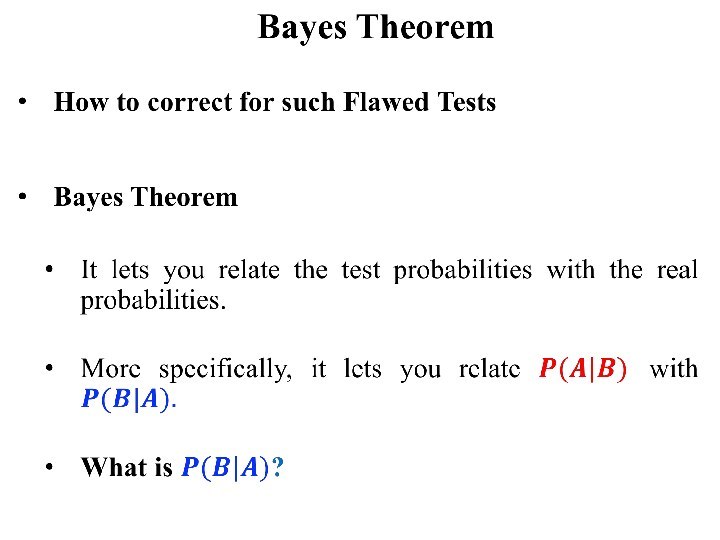
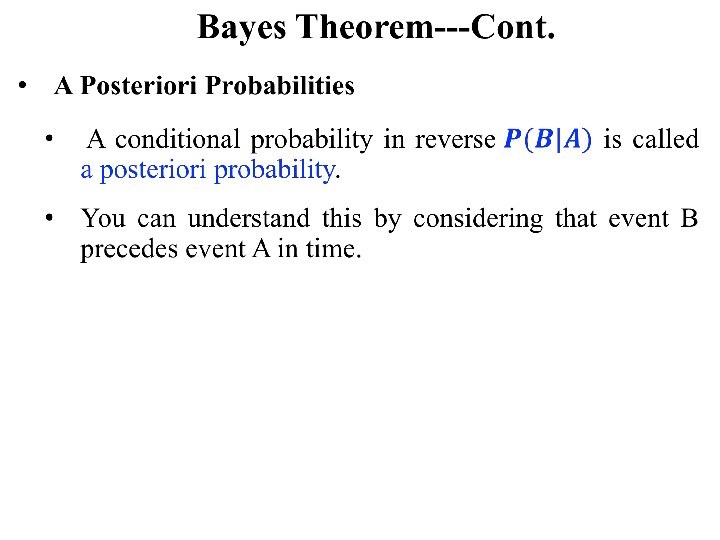
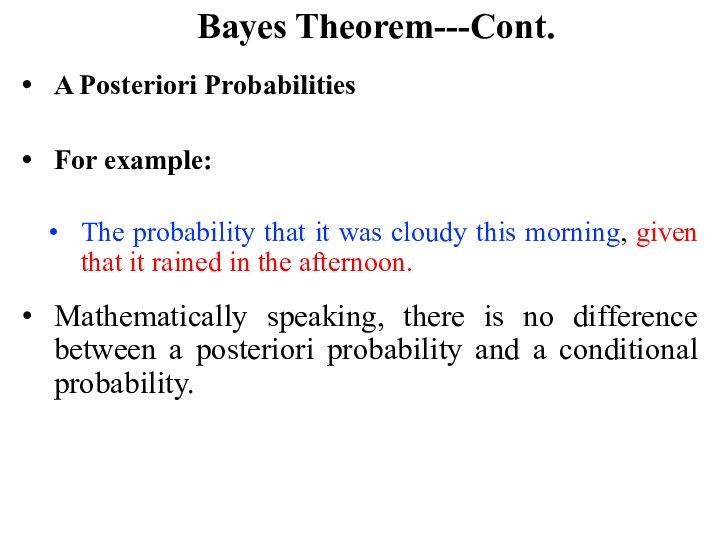
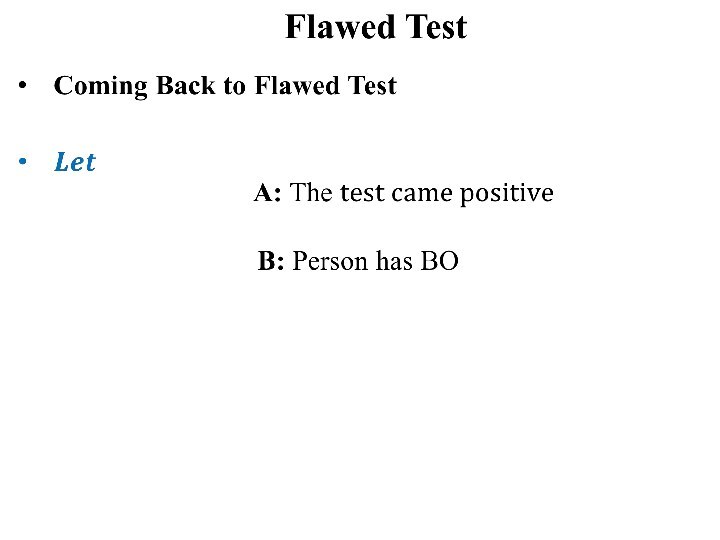
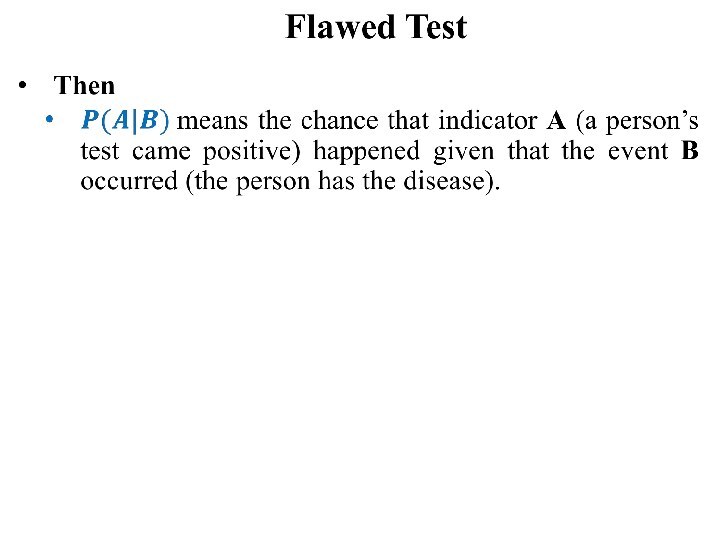
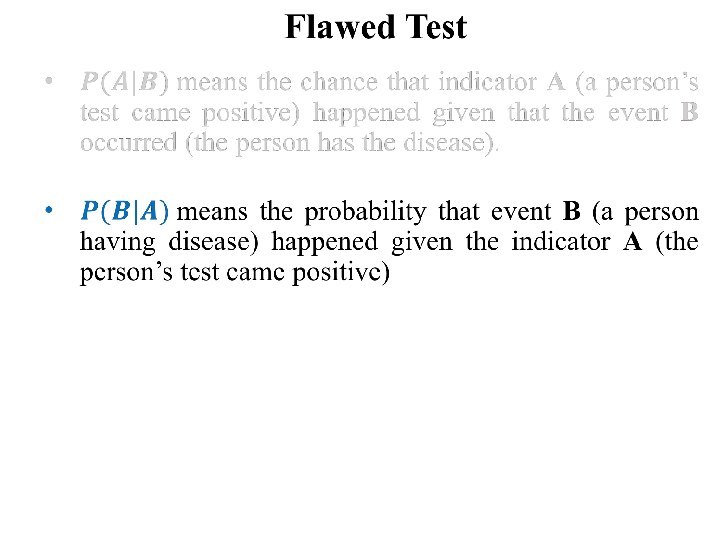
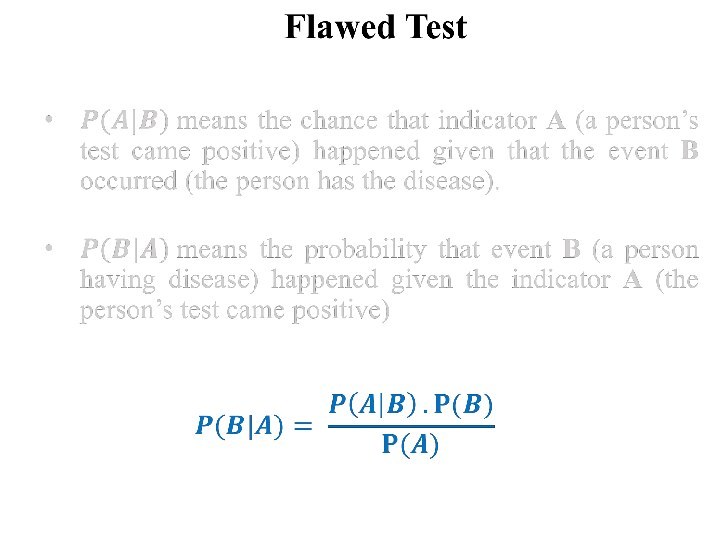

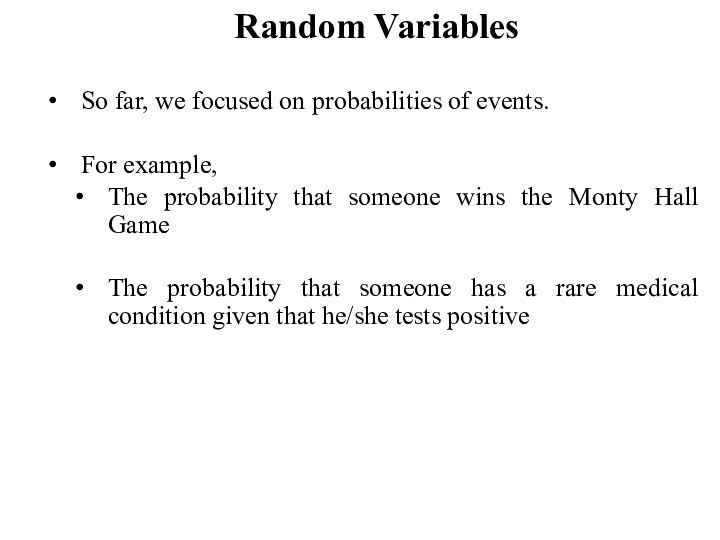


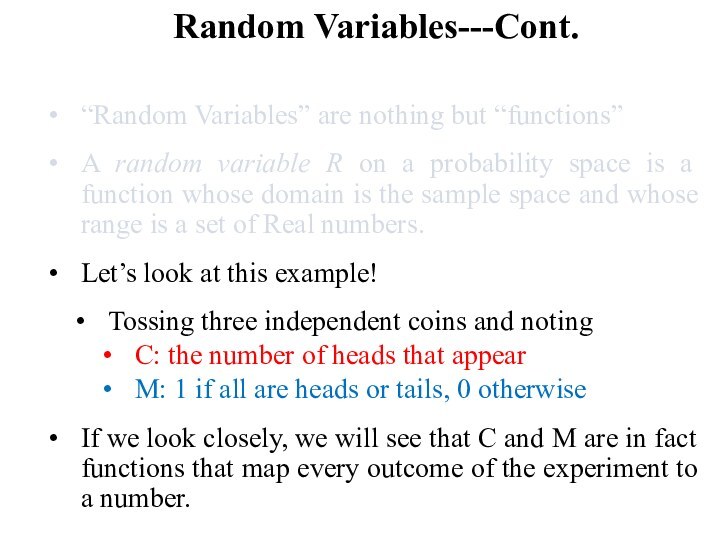


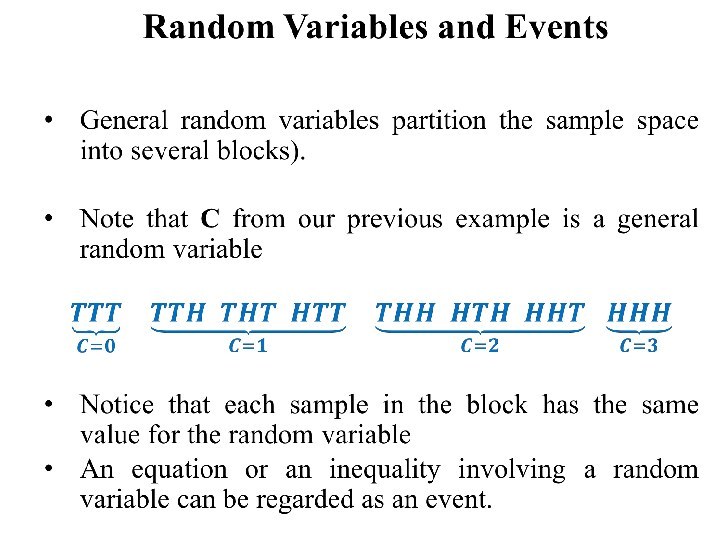
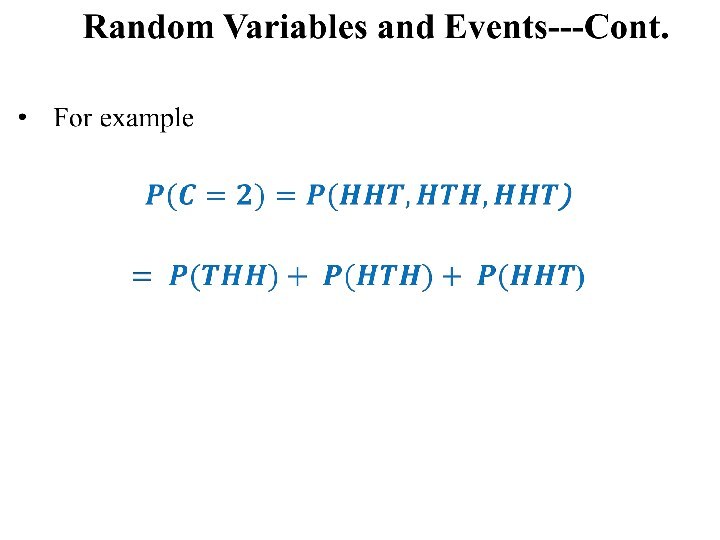
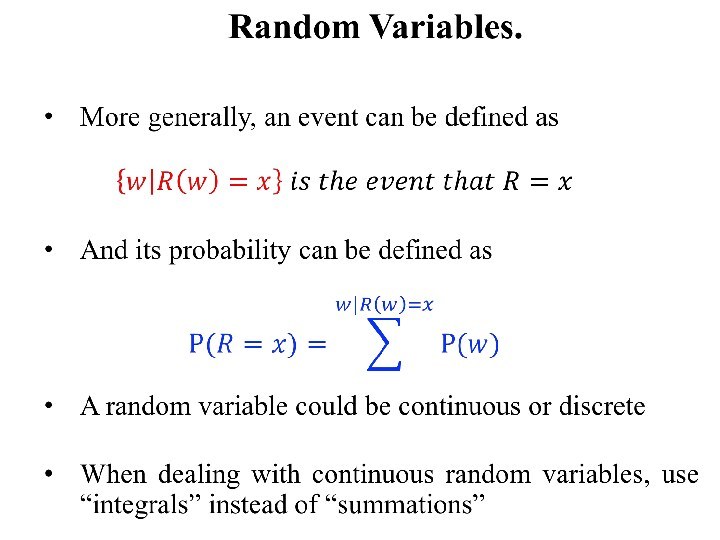


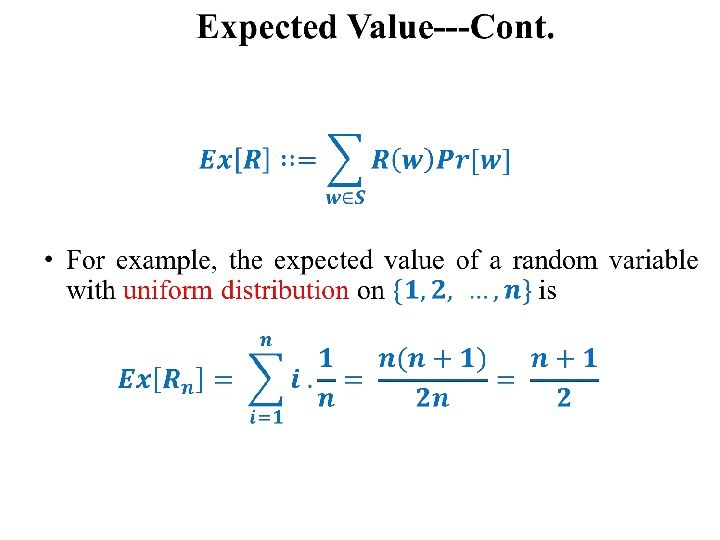

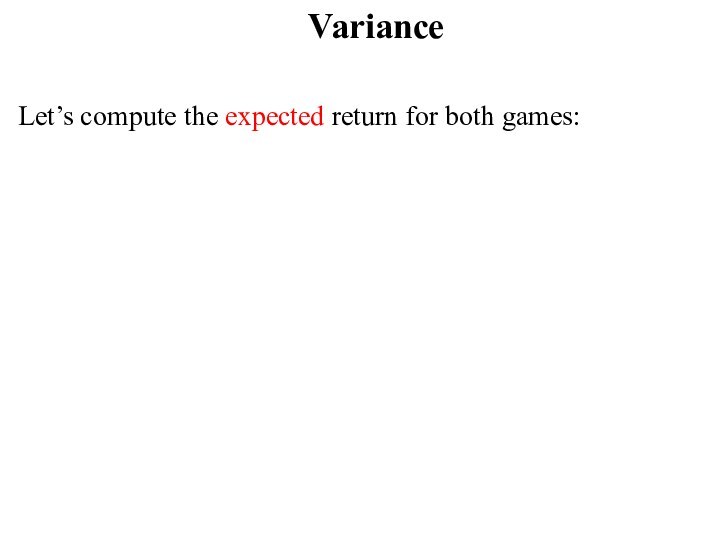


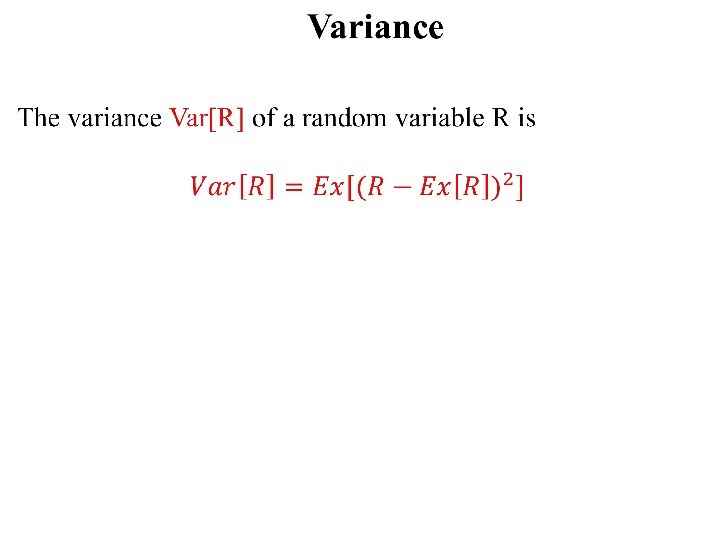

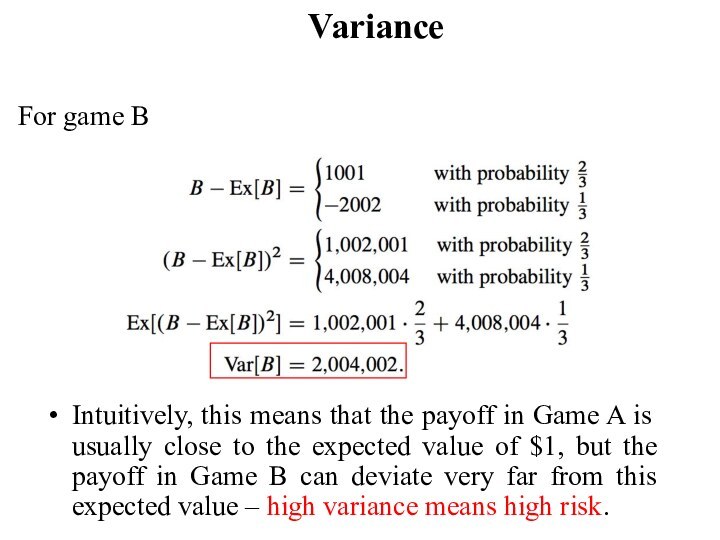
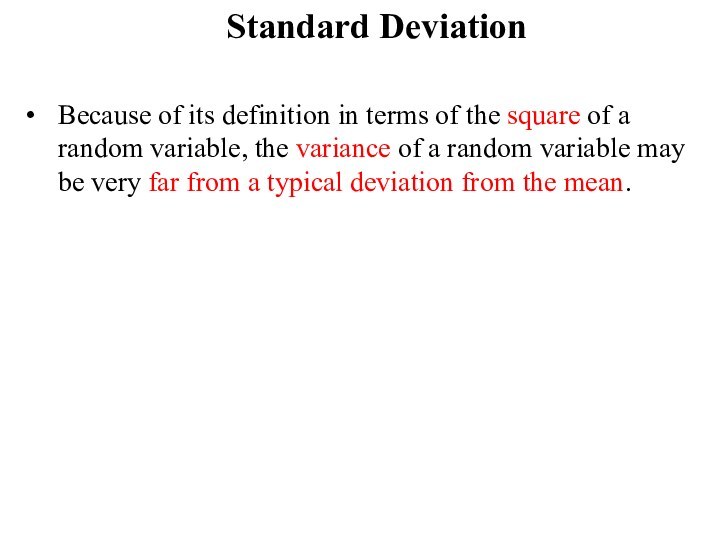


Слайд 3
Today’s Objectives
Counting subsets of a set
Conditional Probability
Independence
Total Probability
Theorem
Baye’s theorem
Random variables
Слайд 5
Why Count Subsets of Set?
Example:
Suppose we select
5 cards at random from a deck of 52
cards.What is the probability that we will end up having a full house?
Doing this using the possibility tree will take some effort.
Слайд 14
Conditional Probability
An Interesting Kind of Probability Question
“After
this lecture, when I go to UI canteen for
lunch, what is the probability that today they will be serving biryani (my favorite food)?
Слайд 16
Conditional Probability
Of course, the vast majority of
the food that the cafeteria prepares is NEITHER delicious
NOR is it ever biryani (low probability).But they do cook dishes that contain rice, so now the question is “what’s the probability that food from UI is delicious given that it contains rice?”
This is called “Conditional Probability”
Слайд 17
Conditional Probability
What is the probability that it
will rain this afternoon, given that it is cloudy
this morning?What is the probability that two rolled dice sum to 10, given that both are odd?
Written as
P(A|B) – denotes the probability of event A, given that event B happens.
Слайд 20
Why Do Tree Diagrams Work?
We have solved multiple
probability problems using tree diagrams
Let’s think for a moment
about “why do tree diagrams work?”The answer involves conditional probabilities
In fact, the probabilities that we have been recording on the edges of a tree diagram are conditional probabilities
More generally, on each edge of a tree diagram, we record that the probability that the experiment proceeds along that part, given that it reaches the parent vertex
Слайд 21
Why Do Tree Diagrams Work?
Let’s look the upper
most edges of the probability tree for the previous
example!
Слайд 24
Why Do Tree Diagrams Work?
“So the Product Rule
is the formal justification for multiplying edge probabilities in
a probability tree to get outcome probabilities”
Слайд 32
What Independence Really Means?
Thus being dependent is completely
different from being disjoint!
Слайд 33
What Independence Really Means?
Thus being dependent is completely
different from being disjoint!
Two events are independent, if the
occurrence of one does not change our belief about the occurrence of the other.
Слайд 34
What Independence Really Means?
Thus being dependent is completely
different from being disjoint!
Two events are independent, if the
occurrence of one does not change our belief about the occurrence of the other.Typically the case when the two events are determined by two physically distinct and non-interacting processes.
Getting heads in a coin toss and snowing outside
Слайд 35
Independence---Cont.
Generally, independence is an assumption that we
assume when modeling a phenomenon.
The reason we so-often assume
statistical independence is not because of its real-world accuracyIt is because of its armchair appeal: It makes the math easy
How does it do that?
By splitting a compound probability into a product of individual probabilities.
(Note for TAs: Include example of Independence assumption in tutorials)
Слайд 42
Medical Testing Problem
Let’s assume a “not-so-perfect” test for
a medical condition called BO suffered by 10% of
the populationThe test is not-so-perfect because
90% of the tests come positive if you have BO
70% of the tests come negative if you don’t have BO
If we randomly test a person for BO, and if the test comes positive, what is the probability that the person has BO.
Слайд 43
Probability Tree
A: The test came positive
B: The
person has BO
BO is suffered by 10% of the
populationIf someone has BO, there is a 90% chance that the test will be positive
If someone does not have the condition, there is a 70% chance that the test will be negative.
Слайд 45
Conditional Probability Tree---Cont.
Surprising, Right!
So if the test
comes out positive, the person has only 25% chance
of having the diseasesConclusion:
Tests are flawed
Tests give test probabilities not the real probabilities
Слайд 48
Bayes Theorem---Cont.
A Posteriori Probabilities
For example:
The
probability that it was cloudy this morning, given that
it rained in the afternoon.Mathematically speaking, there is no difference between a posteriori probability and a conditional probability.
Слайд 54
Random Variables
So far, we focused on probabilities
of events.
For example,
The probability that someone wins the
Monty Hall GameThe probability that someone has a rare medical condition given that he/she tests positive
Слайд 55
Random Variables
But most often, we are interested
in knowing more than this.
For example,
How many players
must play Monty Hall Game before one of them finally wins?How long will a weather certain condition last?
How long will I loose gambling with a strange coin all night?
To be able to answer such questions, we have to learn about “Random Variables”
Слайд 56
Random Variables---Cont.
“Random Variables” are nothing but “functions”
A random
variable R on a probability space is a function
whose domain is the sample space and whose range is a set of Real numbers.
Слайд 57
Random Variables---Cont.
“Random Variables” are nothing but “functions”
A random
variable R on a probability space is a function
whose domain is the sample space and whose range is a set of Real numbers.Let’s look at this example!
Tossing three independent coins and noting
C: the number of heads that appear
M: 1 if all are heads or tails, 0 otherwise
If we look closely, we will see that C and M are in fact functions that map every outcome of the experiment to a number.
Слайд 63
Expected Value
Weighted average of the values of a
random variable
Provides a central point for the distribution of
the values of a random variableWe can solve many problems using the notion of expected values
How many heads are expected to appear if a coin is tossed 100 times?
What is the expected number of comparisons used to find an element in a list using the linear search?
Слайд 66
Variance
Consider the following two gambling games:
Game A:
You win $2 with probability 2/3 and lose $1
with probability 1/3.Game B: You win $1002 with probability 2=3 and lose $2001 with probabil- ity 1=3.
Which game would you play?
Слайд 72
Variance
For game B
Intuitively, this means that the
payoff in Game A is usually close to the
expected value of $1, but the payoff in Game B can deviate very far from this expected value – high variance means high risk.
Слайд 73
Standard Deviation
Because of its definition in terms
of the square of a random variable, the variance
of a random variable may be very far from a typical deviation from the mean.
Слайд 74
Standard Deviation
For example, in Game B above,
the deviation from the mean is 1001 in one
outcome and -2002 in the other. But the variance is a whopping 2,004,002The problem is with the “units” of variance.
If a random variable is in dollars, then the expected value is also in dollars, but the variance is in square dollars












